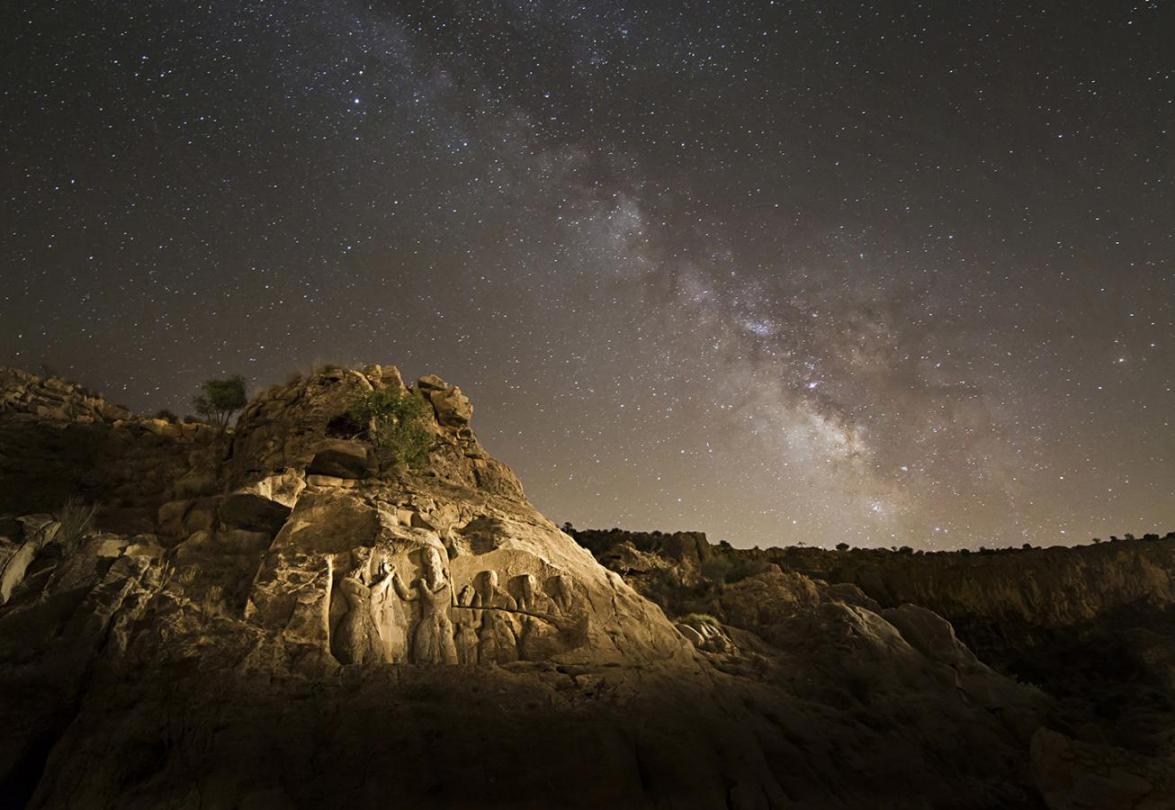The development of the tourism industry has become a major talking point in Iran in recent years. Finding ways to expand different types of tours is an important step towards a realizing this goal.
Astronomy tourism is a type of tour which has been garnering a lot of attention lately. Since the dawn of time, mankind has been fascinated with the night sky. It should come as little surprise, then, that travel agencies have tried to capitalize on this ancient fascination and have organized tours to allow interested individuals to witness the beauty of the night sky it all its glory, far away from cities’ light pollution.
With the central and eastern parts of it covered in deserts, Iran is a geographically-favored place to conduct astronomy tours. The deserts of Dasht-e Kavir and Dasht-e Lut provide clear skies for astronomy enthusiasts, making them some of the greatest places on the planet to witness the Heavens.
Gonbad-e Mina Planetarium
Sadly, not everyone has the time to take an astronomy tour; life has a habit of getting in the way of living. The Gonbad-e Mina Planetarium in Tehran, however, makes sure everyone gets a chance to gaze upon the starts without the nuisance of light pollution.
Located in the Aab-o-Atash Park in the Abbas Abad neighborhood of Tehran, Gonbad-e Mina (Dome of Mina) was inaugurated in October 2014, making it the largest 3D planetarium in the Middle East.
The planetarium offers visitors a view of the sky projected onto the domed ceiling; a single projector located at the center of the planetarium provides the background while there are separate projectors for the Sun, the Moon, the planets, and other stars.
One of the most intriguing star shows at the planetarium are projections of the night sky at various latitudes and longitudes at any moment in the past. Visitors are also treated to the position of unique constellations as seen from the northern and southern hemispheres.
The projection system, paired with the digital surround sound channels provide a surreal experience as you are taken on a journey through space.
The planetarium also houses a museum, showcasing ancient artifacts used thousands of years ago to observe and study the sky. One such artifact is the 2000-year-old Parthian Battery - discovered in the ancient city of Ctesiphon in 1936 – which is said to have been used as an electrical storage device.
Another item of note is an astrolabe; a very ancient astronomical computer for solving problems relating to time and the position of the Sun and stars in the sky.
Astronomy and Astrology in Ancient Persia
Astrology is an occult practice with its roots in ancient civilizations. The oldest discovered records of the practice date back to 2000 BC; to ancient Babylonia.
Astrologers of the time studied the movement of the planets and assigned them godlike attributes. Observing the planets gradually resulted in rudimentary scientific advances in astronomy. The observations might have been important to the regulation of the calendar as well. The Babylonian/Assyrian astrology later took hold in Egypt, Persia and other ancient civilizations.
Mathematical astronomy was used to build multistory ziggurat towers, such as Chogha Zanbil in Susa (in present-day Khuzestan Province), dating back to the Elamite Era. Ziggurats functioned as observatories; at seven-floors high, ziggurats were used by astronomers to observe and record the movement of celestial bodies. Tables with astronomical computations of the distances between stars have been preserved and contain information on the basic fixed stars and constellations, their relative positions, and periods of the solar rising and settings, among others.
Ka’ba-ye Zartosht in Naqsh-e Rostam (located in present-day Shiraz), which was built during the Achaemenid Era, bears surprisingly detailed inscriptions of the cycle of days.
In the following centuries, more advanced structures called Chahar Taghi (meaning ‘four arches’ in Farsi) were used by astronomers to create calendars and almanacs. The most famous of such structures are the Niasar Chahar Taghi, Isfahan Province and the Radakan Chahar Taghi, Khorasan Razavi Province.


